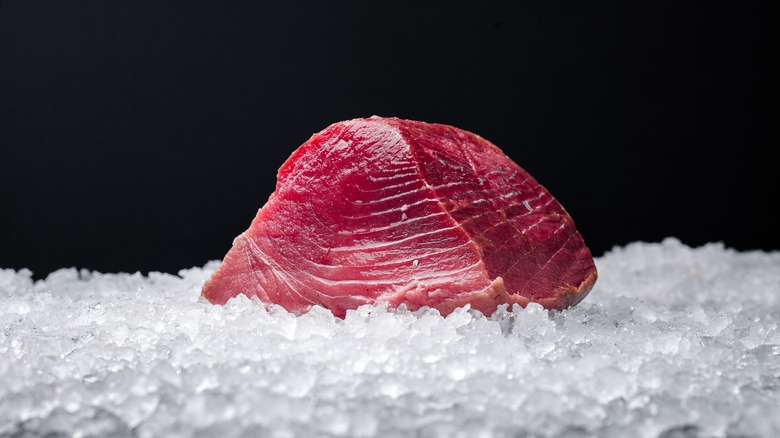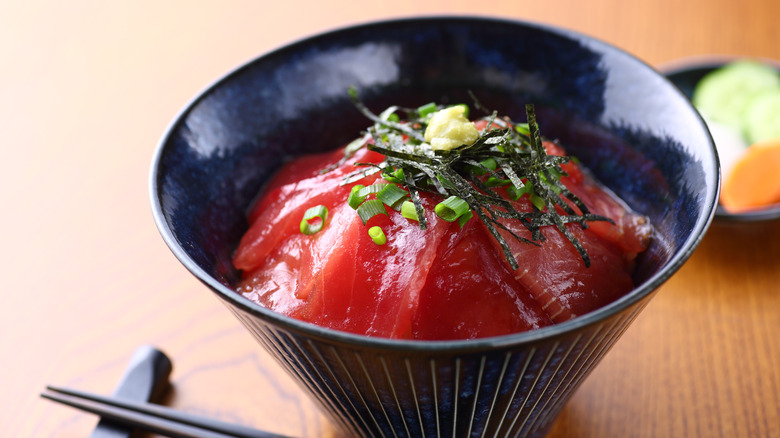The Simple Tuna Marinating Method That Preserves Its Bold Color
Any sushi enthusiast can recognize a good cut of tuna in front of them, simply by its color. Unlike other cuts of fresh fish, tuna has a distinct red color similar to raw beef. As the Washington Post explains, this is due to the presence of a protein called myoglobin, a substance more commonly found in land animals like cattle which stores oxygen in muscle tissue. Once exposed to air, this protein turns the meat first bright red, then begins to oxidize and brown. While the Post notes that a little bit of browning of tuna meat does not necessarily mean the fish has gone bad, it does indicate that it is slightly less fresh and it will likely look less appetizing in your sushi rolls.
This issue of freshness has long been a concern for sushi eaters in Japan, who came up with a solution to preserve the color and freshness of tuna centuries ago. According to Sushi University, cooks developed the "zuke" marinating method using soy sauce to preserve the fish starting in the Edo period, which lasted from 1603 to 1867 per Encyclopedia Britannica. Although refrigeration does not strictly require this sort of preservation anymore for health reasons, the method has persisted in different forms because of the delicious, umami flavor that is imbued in the fish.
Zuke preparations
Although exact recipes vary, Umami Insider notes that all zuke tuna is prepared with a combination of soy sauce, mirin, sake, and dashi broth. The point of the process is to only let the outside of the fish brown while keeping the meat on the inside the ideal fresh, red color, per The Sushi Legend.
There are two ways in which this marinating process is usually done according to Sushi University. This first is "single zuke" in which the fish is simply soaked in the marinade for a short time. This method, detailed in Umami Insider, is usually used when creating Magura Zuke Don, which is a sort of sushi rice bowl often served with nori and wasabi (per Sudachi Recipes).
The second, more traditional method, involves parboiling – or scalding – the fish before marinating it. The Washington Post explains that this can be done by wrapping a fresh piece of tuna in a paper towel and setting it in a colander in the sink, then pouring boiling water over the bundle. Quickly turn over the wrapped fish and do the same to the opposite side, then submerged the fish in ice water to prevent the heat from cooking more than just the outer layer of meat. After cooling down, dry the fish and place it in the soy sauce marinade for about 45 minutes. This will create enough of a barrier to preserve the fish's natural flavor and color, while still benefiting from the soy sauce umami.

